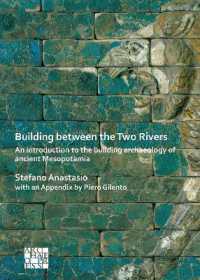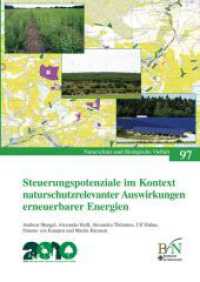- ホーム
- > 洋書
- > 英文書
- > History / World
Full Description
The Order of the Hermits of St Augustine has long been sidelined as a pale imitator of the Franciscans. This book provides a fundamental cross-disciplinary re-evaluation of the lives, ideas, and impact of the Augustinian friars. By challenging the scholarly focus on the urban sphere in communal Italy, it explores the rapid emergence of Augustinian convents as lively religious and artistic centres on the margins of cities and in the Italian countryside. Moreover, it demonstrates for the first time the existence of common intellectual themes which linked together dispersed Augustinian communities. Fired by contemporary debates about the antiquity of the Order, the Augustinian friars forged a fictive past in which they linked their origins to St Augustine and late antique hermits. The book argues that saints, objects, and the natural environment all played a vital part in brokering the Augustinian ethos. This is underpinned by tracing the 'things' the Hermits commissioned, inherited, and accumulated to become the 'heirs of St Augustine'. Their forged antiquity was promoted not only through human agencies, such as the creation of eremitical saints' cults, but also through the strategic use of the liminal position of their convents, reinventing the Augustinian hermitages as places of power on the margins of the human sphere and the untamed natural environment. At stake here is the extent of religious patronage in the rural landscape and the re-evaluation of the long-standing tension between city and countryside in the medieval imaginary. Ultimately, this book not only challenges the prevailing understanding of the mendicant movement as a quintessentially urban phenomenon, but also sheds new light on broader processes of medieval societies in forging narratives of power, prestige, and antiquity through materiality and the natural environment.







